February 28, 2022 | OHS Canada Magazine
February 25, 2022 | CBC – The Current (1:01:20)
As part of its mission, the School of Cities (SofC) Graduate Student Fellowship Award provides a forum for urban-focused interdisciplinary and collaborative learning.
SofC Graduate Student Fellows are current U of T students with a strong interest in and passion for urban issues and critical challenges and are leading an innovative and impactful project this term. Two of the 20 selected are from the Department of Civil & Mineral Engineering (CivMin).
Meet our 2022 Fellows from CivMin:
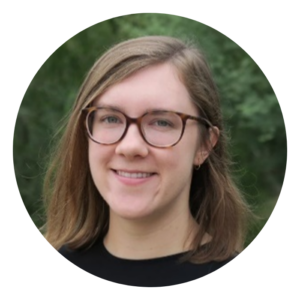 Emily Farrar
Emily Farrar
Emily is a second-year PhD student in CivMin. Her research interests revolve around the intersection of climate change mitigation, the transport sector, and public health. She is excited to investigate strategies to reduce public exposure to air pollutants from traffic sources. Prior to entering the PhD program, Emily worked on topics such as shared mobility and emerging technologies at UC Berkeley’s Transportation Sustainability Research Center. She is currently a volunteer with the University of Toronto’s Graduate Society of Women Engineers, where she serves as the VP of Communications.
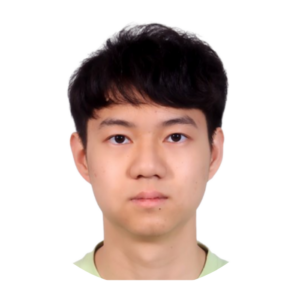 Yunshun Zhong
Yunshun Zhong
Yunshun is a first-year PhD student in Civil Engineering. He has a M.S. degree in Civil Engineering and minor in Data Science from University of California, Berkeley. His research interests lie in the application of machine learning and artificial intelligence in infrastructure asset management. In particular, he is trying to develop an automated shoreline erosion detection and monitoring system based on aerial images by unmanned aerial vehicles using machine learning algorithms. Cities with long shoreline such as Toronto is highly vulnerable to natural hazards of flooding and erosion of shoreline. Therefore, identification and remediation of shoreline hazards is a significant task in urban development and urban environment protection, in which, shoreline erosion monitoring plays a fundamental role.
This article originally published by School of Cities – see the entire list of recipients
Jan/Feb 2022 | ASTM International – Standardization News
February 22, 2022 | National Post
February 20, 2022 | The Conversation
February 21, 2022 | YGK News
Sarah Haines is an Assistant Professor who just started teaching with CivMin in January. Before joining U of T, she completed her undergrad, masters and PhD at Ohio State University. We recently connected with her to learn more about her research and why she’s so passionate about what she does.
How do you like teaching at U of T so far?
It’s been great! I’ve really been enjoying interacting with the students, so it’s been great. We started off on Zoom, but now we’re back in person, so it’s great to see people’s faces—even behind a mask.
What’s your research specialty?
My research specialty is indoor air quality and the indoor microbiome(s). I focus on the microbiology aspect of building science and how that impacts human health. Specifically think about mold growth in homes and how mold and moisture can impact upper respiratory systems. Ultimately, I’m working to make those broader connections between air quality and health outcomes in indoor environments.
I’m hoping to establish new techniques and technologies to prevent mold growth in homes and provide ways to make sure that we have new, sustainable materials or that we’re using different methods to prevent these harmful exposures indoors.
One of the interesting tools that I’ve leveraged has been using smartphones as a method to detect different exposures in housing. Theoretically, we could all use an app on our phones to determine exposure or concentrations of microbes or maybe even CO2 concentrations in our homes.
What kind of future research projects are you looking into?
I’m really passionate solving issues in sustainable housing. Often, we see lots of mold growth and moisture issue in these Indigenous communities and it’s truly a systemic problem. I’m really hoping to be working directly with these communities to establish solutions for these potential harmful exposures.
Is there something that pushed you in this direction that you’ve taken with your research and your career?
My grandmother had some upper respiratory issues and it got me thinking about what she might have been exposed to growing up. This got me thinking about the situation in housing communities at socio-economic disadvantage. Now I want to know how we can improve indoor air quality and just housing quality in general.
What’s the coolest project you ever go to be part of?
Analyzing space dust! While doing my masters and PhD research, we were in connection with someone at NASA who wanted to send us some “space dust”. I will admit, initially we were so excited thinking it was going to be from Mars or the moon, but it turned out to be just some dust they vacuumed up at the International Space Station. It was still very cool, but a bit of a letdown! We tested it for different micro biological components of bacteria and fungus, as well as particle size, and provided the results to them.
You grew up and did all your schooling in Ohio before moving to Toronto, correct?
Yes, I grew up in Kirtland, Ohio, a suburb of Cleveland. What I really loved about growing up there, is that we were close to a city, but I was also close to different farms and rural life. I grew up in a very small town where everyone knew everyone and we went to football games on Friday nights. I was even in the marching band.
You play the flute, right?
I started playing in middle school and I was part of the Cleveland Youth Wind Symphony in high school, and I still play today.
What’s your go-to song?
I have the sheet music from the ‘Pride and Prejudice’ movie with Keira Knightley. I really enjoy playing songs from that.
By David Goldberg
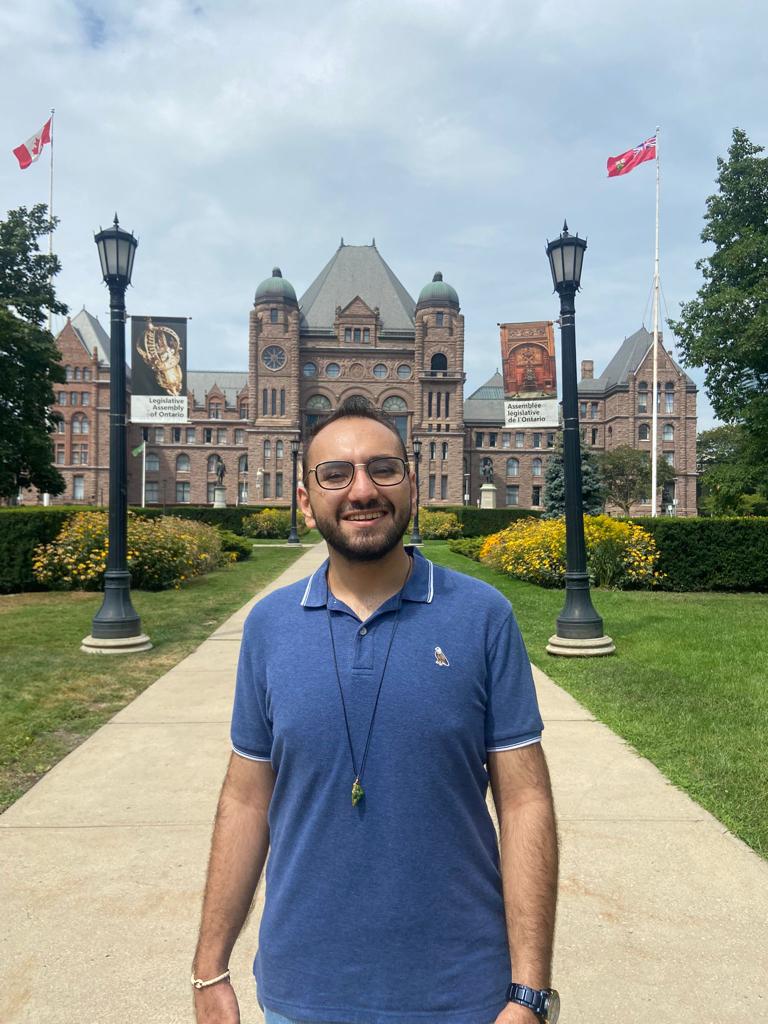
In advance of the coming Graduate Research Days, February 24 & 25, CivMin contacted previous participants to get their point of view on the event and their research goals at U of T. Our Q&A is with PhD candidate Weaam Jaafar.
If you could let us know a little bit about yourself, where you came from, as in what institution, and what attracted you to U of T.
My name is Weaam Jaafar. I am originally from Lebanon, where I attended the American University of Beirut. I got my bachelor’s in chemistry and after that I worked two years in air quality and emissions in Lebanon. I work now with Professor Marianne Hatzopoulou. I saw what she worked on, and it really attracted me to her work, so I applied to U of T.
How did you become aware of Professor Hatzopoulou’s work?
I worked at a professor’s lab before and she recommended me to [Prof. Hatzopoulou], then on the U of T website I saw lots of information about what she does and I became aware of the opportunity.
What are you working on now with Professor Hatzopoulou’s group?
Right now I’m working on a citizen science project where we are working with citizens from the community. We are teaching them how to install air sensors, and compare emission data, so they can actually have the hands-on approach and understand the end result. We’re going to raise awareness towards air pollution to a specific community – around Yonge and Eglinton.
I guess you’ve seen UrbanScanner as well?
Yes, I have. I haven’t tested with it, though I know all about it and have seen it, but I still did not get the chance to use it.
Did you attend the Graduate Research Days (GRD) last year? Was it a positive and reinforcing experience?
Yes, I did. It was really nice, especially as I came from a background that is not related to engineering (chemistry). It was a very nice way for me to get introduced to what people are working on and to have a chat with the professors. It was a really nice experience and, even though we couldn’t do it face-to-face because of COVID, it was a really nice way of doing it virtually.
We had this virtual platform, GatherTown where we created avatars of ourselves, and we used them to go around the hall from room to room. It was so much fun. You could chat one-on-one or within a larger group, as you liked.
It was just one big room, split it into different corners, where every professor had the corner. The administration had their own corner; it was really simple, very nice and quick.
Did you have the chance to meet any of the professors, or students, from U of T prior to that event? Or was [GRD] your first contact?
I did know a student who works with Professor Hatzopoulou. She put me in contact because we’re both from Lebanon and they did guide me through the process a bit with this event. But, other than that, I had no other contact.
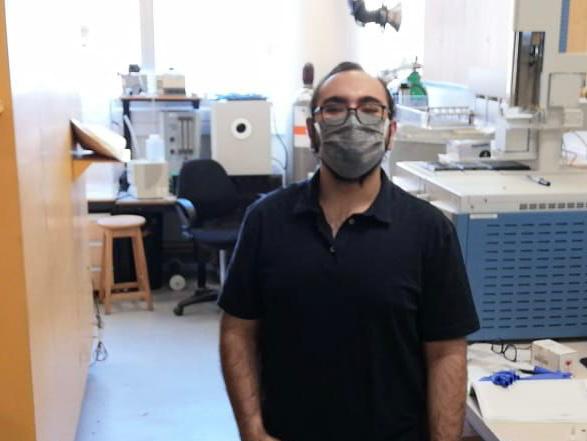
We knew last year there were a few incoming grad students located in Beirut and we were concerned, as there had been a massive explosion there last year. We wondered what’s going on, if everyone was okay, and will people be able to attend, even get online, etc?
The Beirut explosion is a tragedy, a very painful event that affected everyone. The number of innocent people lost, the ones injured, the ones left without a home, the damage of our beautiful city caused suffering beyond comprehension. We are still traumatized by it, and I believe that Aug. 4 has left us with a deep scar that is difficult to heal. It was a really rough time. But it was eye opening on a professional and personal level. I got to see the community come together and work on a project related to the explosion. It was on the emissions and what happened after [the explosion]. We were able to provide awareness to the public about air quality and safety – if they should close their windows or open their windows.
You’ve arrived here in Canada now and so how did you find getting accustomed to Canada, the city and the campus?
Aside from the cold, everything is fine. All in all, it was a really nice experience. The community is great, and especially welcoming at U of T. As I said, I come from a background that’s very different from engineering and I didn’t feel like I was left out.
People from the lab who I’ve met virtually, or I’ve spoken to them, they’ve helped me a lot on aspects of my project. It’s a really nice community and I honestly can’t wait to go back in person to meet more people.
How have you found, overall, the city to get around and the campus? Have you found any areas of the city you really like?
I have adjusted well. I haven’t had much time to explore the city, but I went to some of the famous places such as Lake Ontario, Toronto Island, Queen’s Park and the CN Tower, which is pretty huge. It was really nice, you feel relaxed when you’re there, and everything is accessible. Everything is easy.
A part of my lifestyle changed, because in Beirut we didn’t have, for example, a tap to pay [system at stores]. Now here it’s just hold your phone up, you go out and you’re finished. It’s that simple.
Do you live downtown near campus or further away? You’ve found the city easy to get around with a walking or public transit and going to various neighborhoods?
I live downtown, near campus, about 20 minutes away by walking.
It really is easy, so I usually take either the subway or walk, depending on the distance. Everything is accessible by foot. It’s really nice that everything is so close to you and don’t have to travel to far places to get one thing or another.
Toronto is supposed to be one of the most multicultural cities in the world. Do you agree?
Yes, I think so. Next to the University of Toronto there’s Chinatown and Kensington Market near it. It’s so nice. it’s like a huge part in in the city. And then you go back you go to another block over and it’s so different. People from all around the world – it’s not just embedded in the university itself, but it’s all around Toronto.
You arrived in the summer and now it’s winter. How have you adapted?
I arrived in August, so got to experience some heat in the city. I used to be a winter guy, now I’m definitely a summer guy. The cold is manageable, but in the end I really like the summer here – it’s not too hot.
You’re now prepared you for winter and properly clothed, so that’s great. Do you have any tips for students who would be coming to campus or Toronto or even Canada for the first time? Do you have any advice for for them?
I think my advice would be to arrive earlier, or as soon as possible. If the semester starts in September, arrive two weeks before, just so that you settle in. Everything is good because for me, for example, one of the things is you have a time zone difference – you need to adjust to that. Then you need to get your priorities straight – from bank accounts to getting a full SIM card. Even though everything is accessible, you’re still new to the country. Don’t be afraid to ask anyone. Everyone is helpful.
So that’s it. Honestly, just be there on time. Be prepared because U of T is not a difficult university, but it’s going to take time. It’s going to take time and effort. So, if you arrive only a couple of days before class, then immediately engage in the university, you’re going to be lost. Take some extra time beforehand to get prepared.
It’s not even a full year into your research. What’s on the horizon for you, and what’s further out?
Honestly, what’s next is right now I’m just working on developing my project. I want to see how I can elevate it. The something positive about my project right now is I’m getting to experience working with citizens. So working with people from Lebanon, and working with people from Canada, it’s going to be something different. I look forward to that to see what comes next.
Your other colleagues, or research stream students, are they from all over the world as well, right?
Yes, I’ve met some people from Canada, from Iran, Lebanon, Poland and the United States. It’s very, very diverse.
Is the research-stream community really very global at U of T?
It is. It is big time. You’ll be surprised like it’s not just Canadians and a couple of international students. I would say that international students are a big part of the research stream students at the University.
Is this a great opportunity to forge friendships and/or professional relationships that might carry on for a longer time than simply in school?
It gets you more exposure and more learning about new things, new cultures, and different connections. The connections are great that you make here, so it’s a really big opportunity. We have different-thinking people from around the world meeting, discussing what could be, seeing different perspectives and different views. That part is really amazing.
By Phill Snel
As the University of Toronto implements energy retrofits to buildings across its three campuses to meet its aggressive greenhouse gas emission reduction targets, one group of researchers will use the opportunity to improve the well-being of students, faculty, and staff.
The research project entitled ‘Wellbeing and The Built Environment: A New Framework for U of T Campus Building Performance Assessment’ is a successful applicant to the Dean’s Strategic Fund.
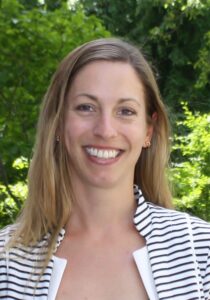
The project is being led by Civil & Mineral Engineering’s Prof. Marianne Touchie along with co-applicants John Robinson of the Munk School of Global Affairs and Public Policy and the School of the Environment, Alstan Jakubiec of The Daniels Faculty of Architecture, Landscape and Design as well as Blake Poland from the Dalla Lana School of Public Health.
Using tools to measure things like indoor air quality and temperature, as well as an app accepting real-time feedback from building inhabitants, the project aims to create a new standard for holistic building performance.
Not only will it assess environmental and economic benchmarks, but it intends to measure the impact of these retrofits on people working and living in these buildings.
Prof. Touchie took some time to tell us more about the three-year project.
What is the project all about?
We want to inform the retrofit process by trying to link specific aspects of the built environment to wellness outcomes of the people living and working in these spaces. We plan to do this through pre- and post-retrofit assessments using indoor environmental quality measurements and inhabitant feedback.
The university is investing millions and millions of dollars in energy retrofits, but while we are making that investment, the question is whether we can integrate other changes to the building that would improve the wellness of students, faculty, and staff more broadly.
What are some examples of the improvements you would make?
Potentially improving accessibility to spaces, making spaces more thermally comfortable or looking at ways in which we could provide more control to inhabitants. As many of the planned retrofits are to the building mechanical systems, I hope we will be able to provide suggestions of how we can better operate these systems to improve the quality of the indoor environment and address inhabitant concerns that come up in the pre-retrofit assessments.
How do green retrofits improve the mood and productivity of people inhabiting the buildings?
The jury is still out on that one. There are some studies suggesting green buildings create a better indoor environment, but there is also a lot of contradictory research.
This is a complex topic with many distinct aspects of the individual, the space, the building, and the broader community all impacting how the inhabitant feels. Previous research has tended to focus on thermal comfort, visual comfort, or indoor air quality independently, and what we are really trying to do is to bring all those elements together into a common framework.
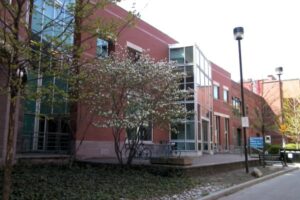
And it is not just the objective quality of the indoor environment that we are interested in, but instead seeing what impact these conditions have on the well-being of the inhabitants.
While these retrofits are designed to reduce GHG emissions to mitigate climate change and reach U of T’s climate positive by 2050 goal, through this project we are hoping to find ways to leverage these retrofits to also be “people positive” by retrofitting spaces to improve comfort, productivity, health for students, staff, and faculty.
What results are you most interested in seeing out of this project?
There are a few things I would like to see come out of this project. From a scientific perspective, I hope this project will contribute to the growing body of knowledge on how aspects of the built environment influence inhabitant wellbeing. From a methodological perspective, I hope that the assessment methods we develop through this project can be integrated into the University’s building retrofit process, both to inform what needs to be addressed through the retrofit and then to verify predicted improvements after retrofit completion to ensure we are meeting our goals related to both the climate and the campus community.
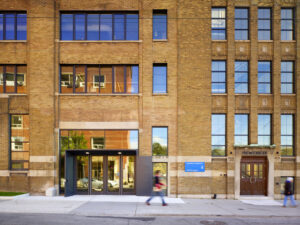
When are you expecting to begin your research?
We have already begun the planning process among the co-applicants and will be kicking off the project soon with a wonderful group of people from across the university working with us on this including Facilities and Services and representatives from the Dean’s and Vice Dean’s offices, as well as our industry partner, the International WELL Building Institute.
We plan to develop the assessment approaches this year and then begin to conduct pre-retrofit evaluations starting in early 2023.
Will people notice this research project going on across campus?
We will target spaces that are common throughout the campus so they might see us in classrooms, offices, and residences. We are also going to combine long-term measurements with inhabitant responses. So, you may see monitoring equipment in particular spaces or calls for participation in the study.
Depending on what the professors allow us to do, we would love to come in to explain the study to students and point out what sort of measurements we will be doing in the classrooms.
How can people get involved?
Keep an eye out for opportunities to participate in the study. We would also be interested in hearing from faculty or staff who know of a space in one of the planned building retrofits that impacts many people in our campus community (e.g., a large classroom or open plan office space). The initial candidate building list includes Earth Sciences and the Exam Centre with more to be identified soon.
Final thoughts?
One aspect of the study that I am really excited about is testing the large-scale use of a technique called Photovoice which we will use to prompt respondents to take photos of aspects of the campus-built environment that add to or detract from their wellbeing.
We are looking to integrate students, staff and faculty perspectives this way as it is a much richer data source than survey responses.
I am hoping we will be able to crowd source images and perspectives on features of a particular building to determine what the most important aspects are to address through retrofits.
By David Goldberg